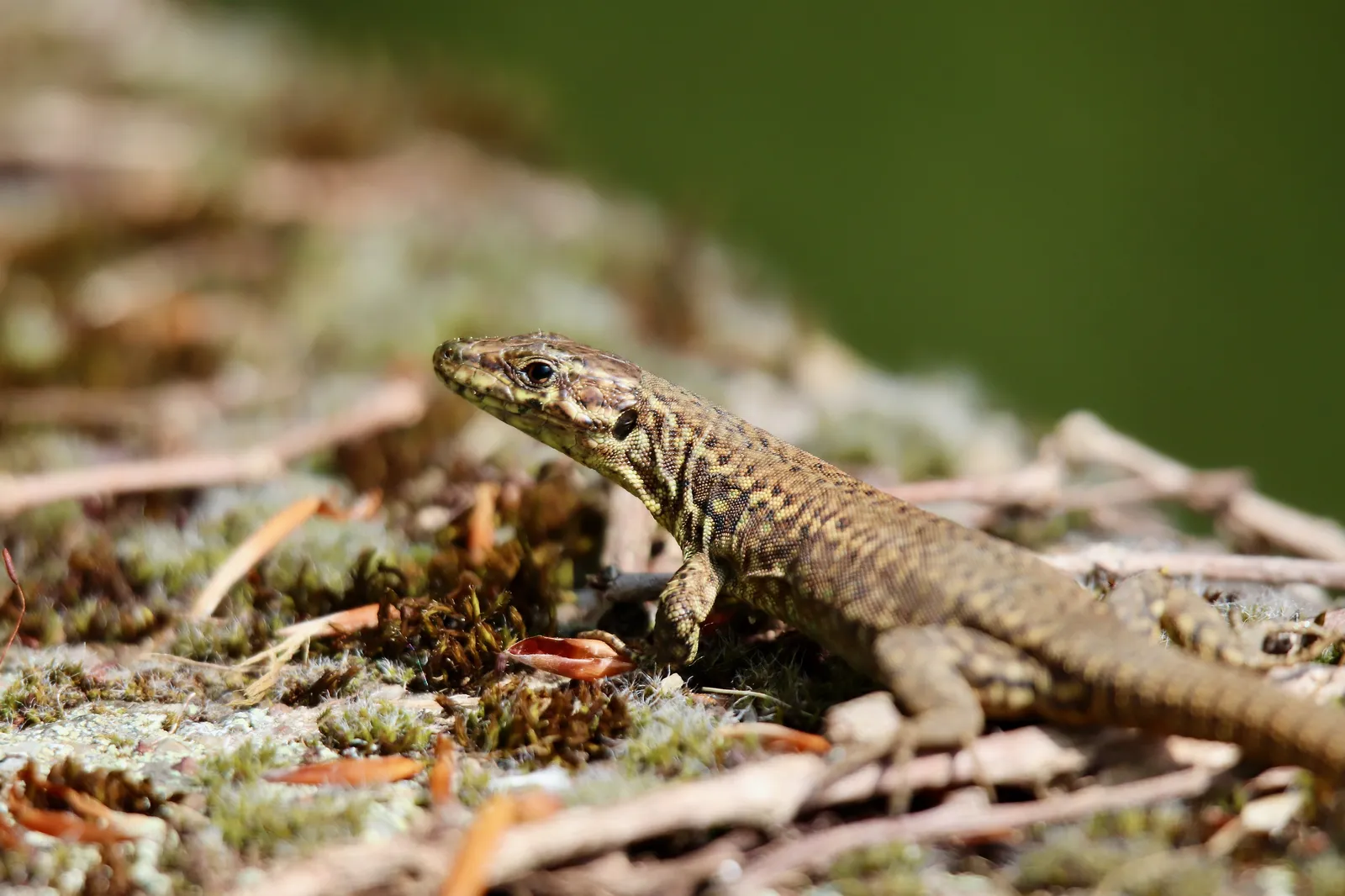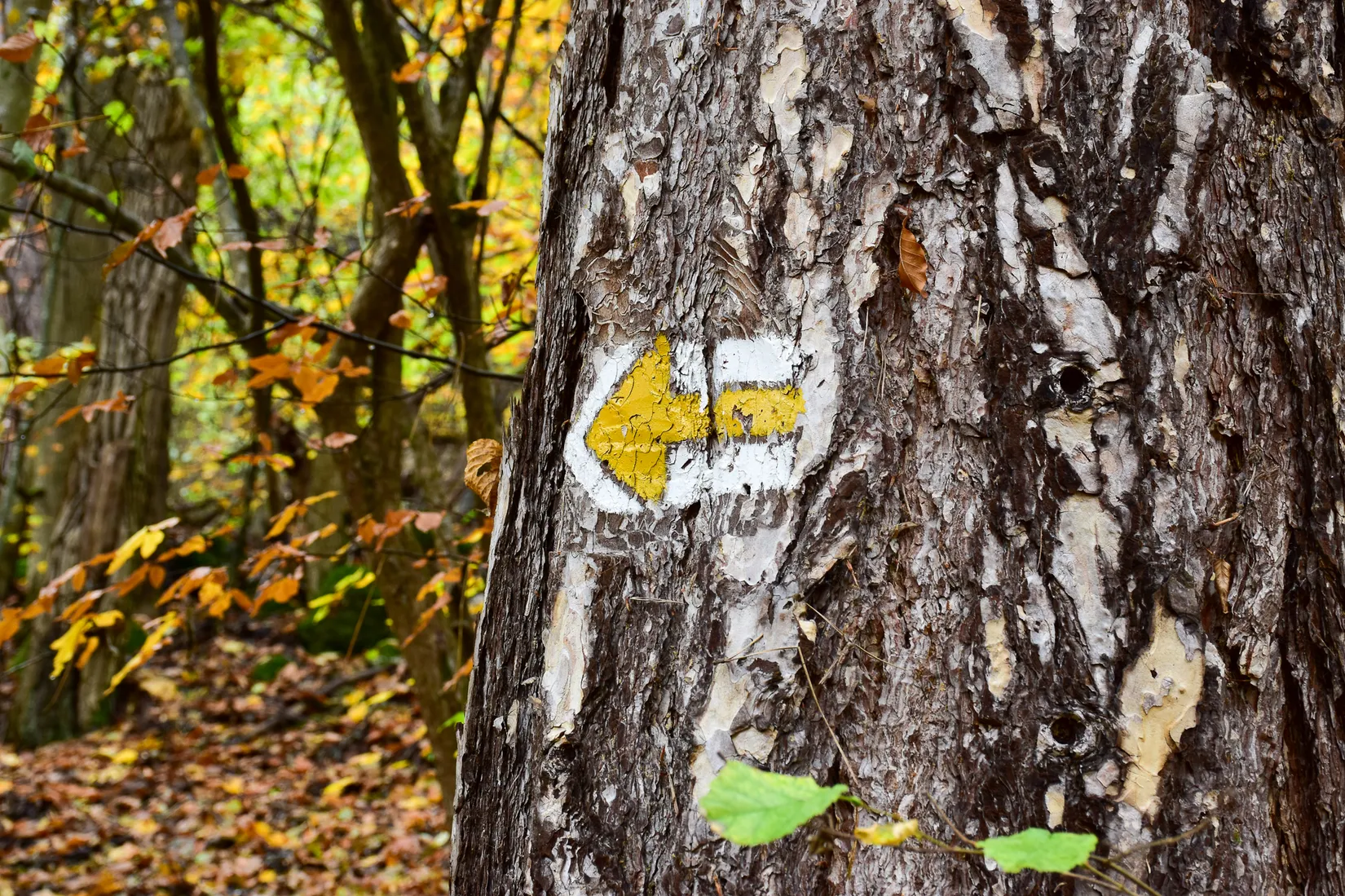
NATURE TRAIL HRADOVÁ
Enter the Forest Kingdom on Hradová
Hradová over Tisovec is a distinctive limestone hill with an elevation of 887 meters. It forms part of the southern edge of the Muráň plateau and stands as one of the region’s most striking landscape landmarks. The area was inhabited as early as the Neolithic period, as evidenced by archaeological finds scattered along the ridge. At its summit lie the remains of a medieval castle known as Tisovec Castle, shrouded in many legends.
The mountain is part of the Muráň plateau National Park and lies within the strictest protection zone . It is also included in the Natura 2000 network as the Tisovský Karst - Site of European Importance and Bird protected area Muránska Planina–Stolica. Thanks to this high level of protection, it is now home to many rare species of plants and animals that you’ll have the chance to discover.
The nature trail features seven stops that lead you gradually uphill to the ruins of Tisovec Castle. From there, you can continue along the ridge on a secured path following the yellow hiking trail and return to the town of Tisovec, or head back to the starting point via the same educational trail.
Practical Information about the Nature Trail
Trail length: 3.12 km
Elevation gain: 480 m
Difficulty: Moderate
Starting point: Tisovec, near the Secondary Vocational School
Marking: Yellow hiking trail
Practical Information about the Full Route
Trail length: 7.9 km
Elevation gain: 480 m
Difficulty: Moderate
Starting point: Tisovec, near the Secondary Vocational School
Marking: Yellow hiking trail
The Forest Is Full of Stories – Do You Want to Discover Them?
This trail is designed primarily for children aged 5 to 12, but everyone - young and old - can enjoy the fun of discovery here. Together with the lynx, bear, owl, or fox, you’ll become forest trackers learning to observe, listen, search for tracks, and guess who lives where.
At each stop, you will find:
- A short story about the life of animals in the forest
- An interactive game or puzzle that engages your eyes, ears, and hands
- A challenge for keen observers – will you manage to see or hear some animals in real life?
We recommend taking it slow, with your eyes and ears open. The forest speaks quietly – only those who truly listen can really hear it.
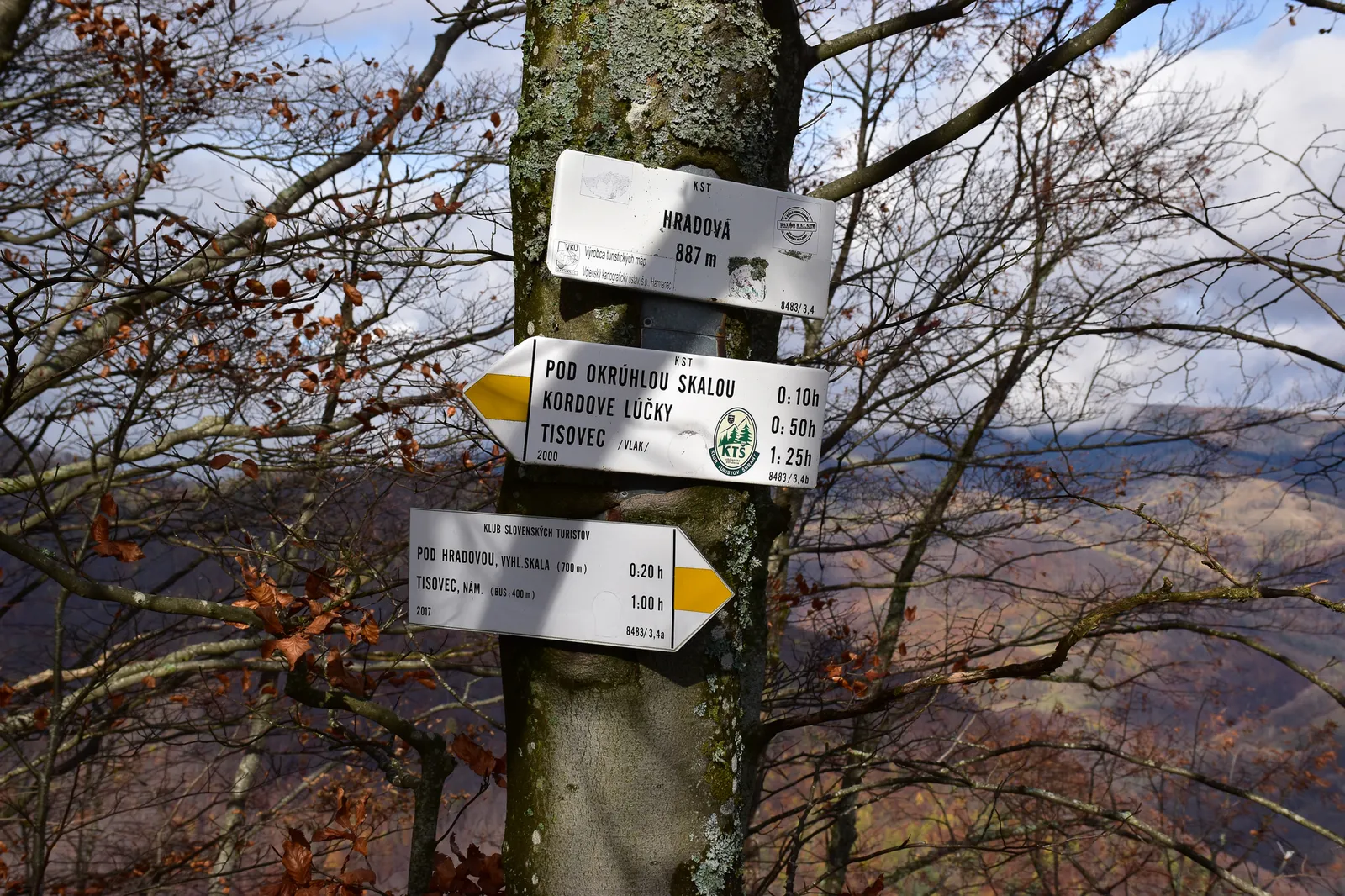
1. Welcome to the Forest World!
Welcome to the forest of Hradová! You're stepping into a story written by nature itself.
This journey is not just an ordinary hike – it’s an adventure, a game, and a discovery all in one.
What awaits you?
You’ll meet the forest’s inhabitants – the quiet ones, the shy ones, and the noisy ones.
You’ll learn how they live, move, communicate, and hide.
You’ll play, touch, listen, and reflect.
You’ll become a forest tracker – someone who can read tracks, sounds, and signs of nature.
Why is this forest special?
You are in the Muráň plateau National Park, in an area with the highest level of protection.
The forest of Hradová is quiet, wild, old, and wise.
It is home to many animals and plants that you won’t find anywhere else.
Don’t forget:
Look around you – up high and down low.
Listen to what the wind whispers and what the forest beneath your feet tells you.
Pay attention to everything – you might meet one of the animal residents!
The lynx advises you:
"Be curious, but also respectful. This forest is a home – behave like a guest who follows the rules.
We recommend walking slowly, with open eyes and ears.
The forest speaks softly – only those who truly listen will hear it."
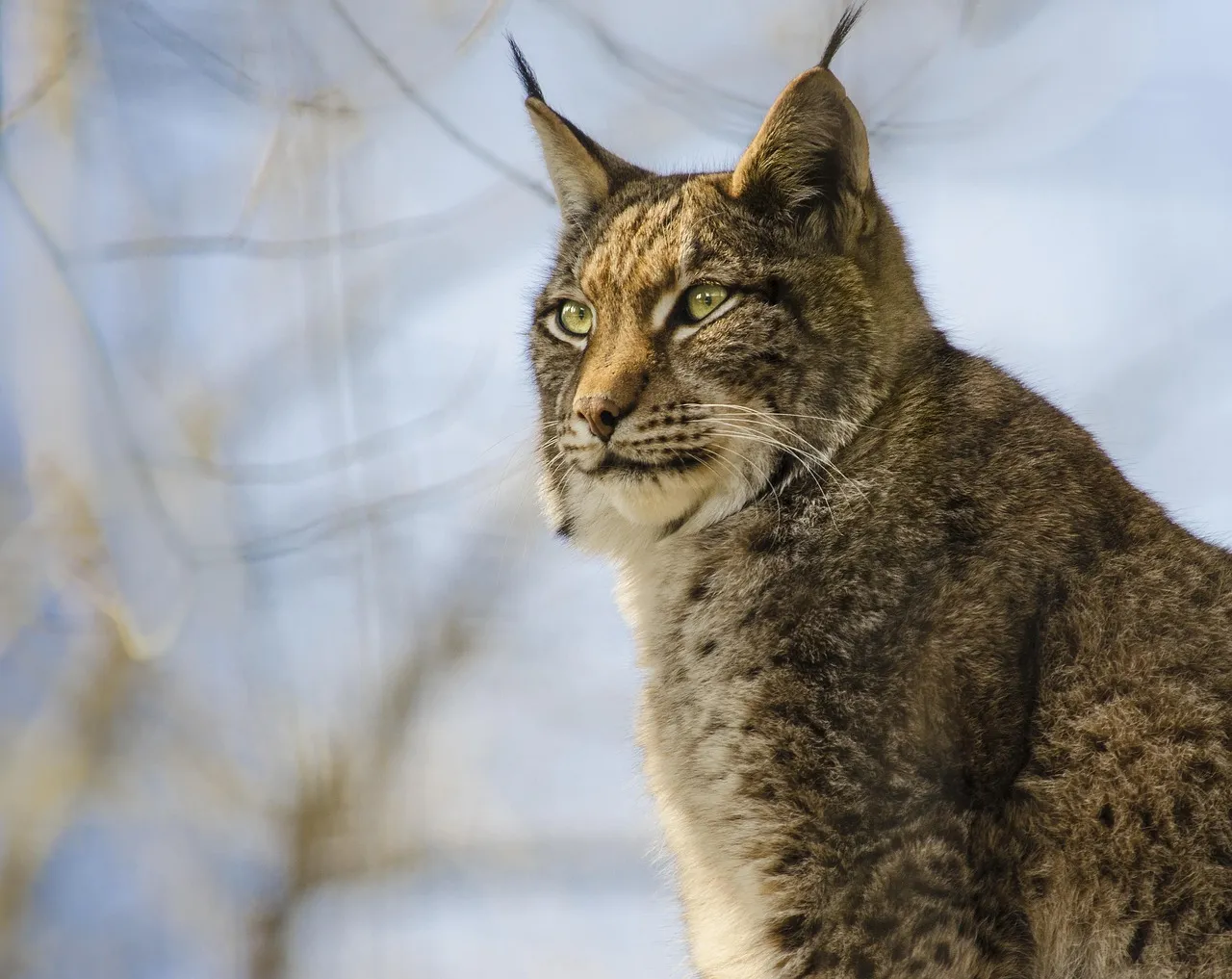
2. Voices of the Forest
The forest is not just a silent place. If you listen carefully, you can discover an entire soundscape – songs, calls, rustling, and even mysterious silence.
Every animal has its own voice or a unique way of expressing itself to the world.
The star of this panel is the owl – a true master of silence.
Owls can hear up to four times better than humans. Their ears are placed asymmetrically – one higher, one lower – which allows them to precisely locate the direction and distance of a sound.
Thanks to this, they can detect even the quiet rustle of a mouse under snow or leaves.
Their flight is almost completely silent – their feathers are soft, with fine fringes that muffle the sound of their wings.
For a nocturnal hunter, this is essential: if they are silent, they won’t scare away their prey and are less likely to become prey themselves.
Owls are not often seen, but we can hear them at dusk and during the night.
Their hooting is used to mark territory or to find a mate.
Who else makes sounds in the forest?
Other forest animals also have their own voices, which they use to communicate, warn, or attract a partner:
- Capercaillie – produces a deep drumming sound, like a muffled drumbeat, especially during its spring courtship display.
- Wolf – howls to keep in contact with the pack or mark its territory. It howls mostly at dusk and during the night.
- Bear – usually silent, but can growl, snort, or huff loudly, especially when irritated.
- Cuckoo – known for its distinctive “cuckoo” call, announcing the arrival of spring. It calls during the day, especially in May.
- Green woodpecker – makes a loud, laughing “klu-klu-klu” sound while perched or flying, used for communication and locating food.
- Lynx – shy and generally quiet, but during mating season it may meow, yowl, or hiss.
- Hind (female deer) – during the rut, she may make short, high-pitched wails to call her fawn or respond to a stag.
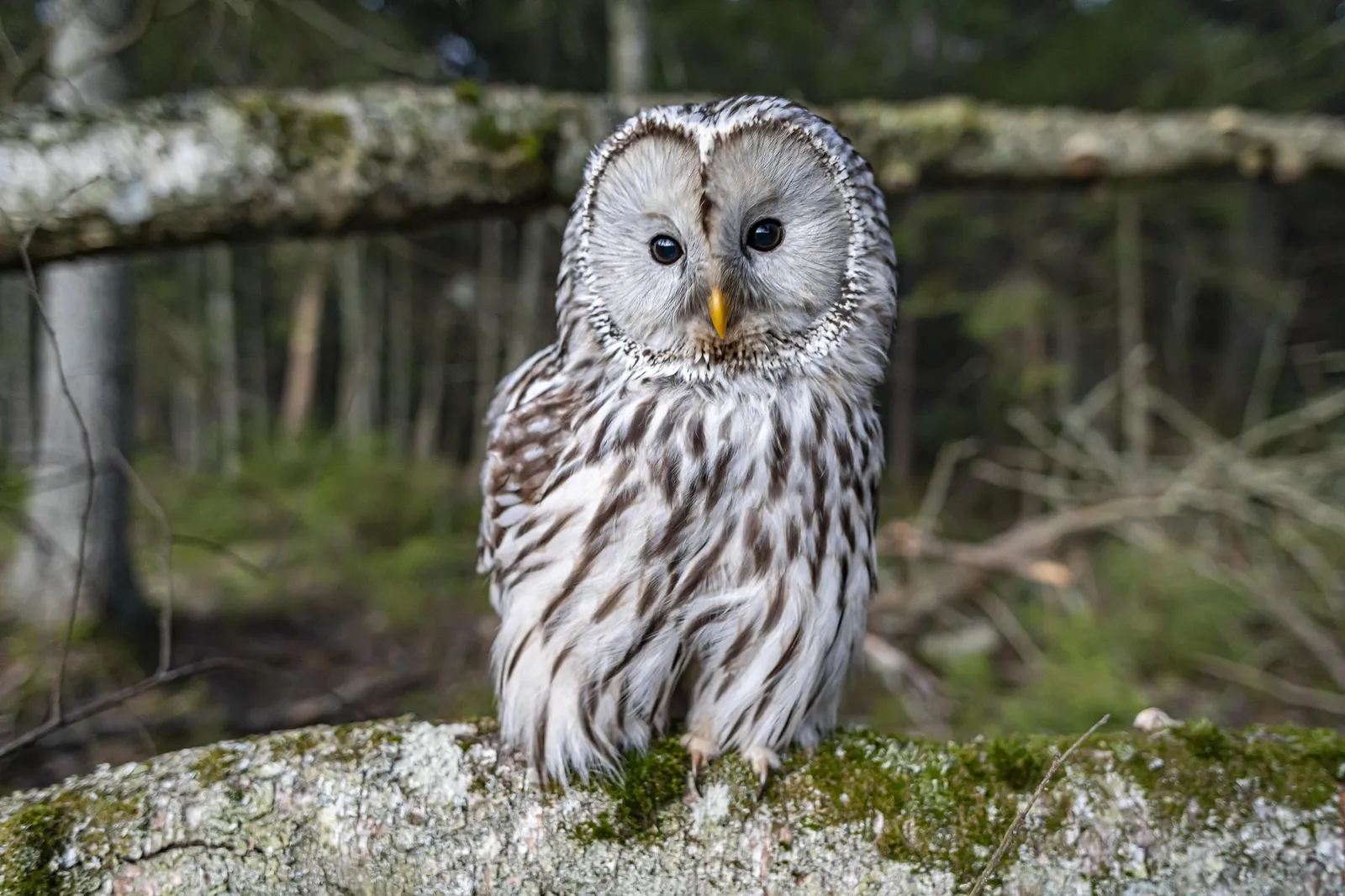
3. Tracks in the Mud – We Were Here
Forest paths, mud, or snow can reveal who has passed by. Every animal leaves behind a specific track that can tell us a lot – not only who it was, but also how it moved, how heavy it might be, and even which direction it went.
The European badger is a stocky animal, 60–90 cm long, weighing 10–15 kg (or more in summer!).
It has short legs and long claws that are perfect for digging.
Its tracks are broad, oval, with clearly visible claw marks in the front paws.
Because of its weight and low posture, its footprints are often deep and well-defined.
It walks slowly and steadily – its left and right tracks are close together, with little spacing.
If you look closely, you might see claw marks etched into the mud – like it was drawing on the ground.
Track Comparison – Who walked here?
- Bear – Tracks are huge (up to 25–30 cm), heavy, and deep. When walking, it places its feet wide apart, and you can see the entire paw – heel, toes, and claws. Bears walk clumsily but can run fast.
- Fox – Tracks are small, narrow, and delicate, often placed in a straight line, as if walking on a tightrope. This is typical of predators with careful, quiet movement. Claws are faintly visible.
- Marten – It moves in bounding leaps – the hind feet land where the front feet were. Tracks are small (about 3–5 cm) and often appear in pairs with short spacing – typical of fast movement or hunting.
- Roe deer – The tracks look like two sharp hooves. There's usually more distance between steps, depending on stride length.
- Wild boar – Similar to roe deer but broader and more rounded. Sometimes you can see imprints of the dewclaws.
- Lynx – Tracks resemble those of a cat – round and without claw marks (they’re retracted). It moves silently and smoothly.
- Hare – Leaves a characteristic “Y” pattern of four prints – the long hind feet land ahead of the front feet. The jumps are long and regular.
- Hedgehog – Tiny, blurry tracks with claw marks, hard to distinguish in mud. Its movement is slow and clumsy.
- Grass snake – Doesn’t leave prints like mammals but rather a wavy line – a serpentine trail in dust or snow.
- Crow – Three forward-pointing toes and one pointing back. The tracks are often scattered or in pairs due to hopping.
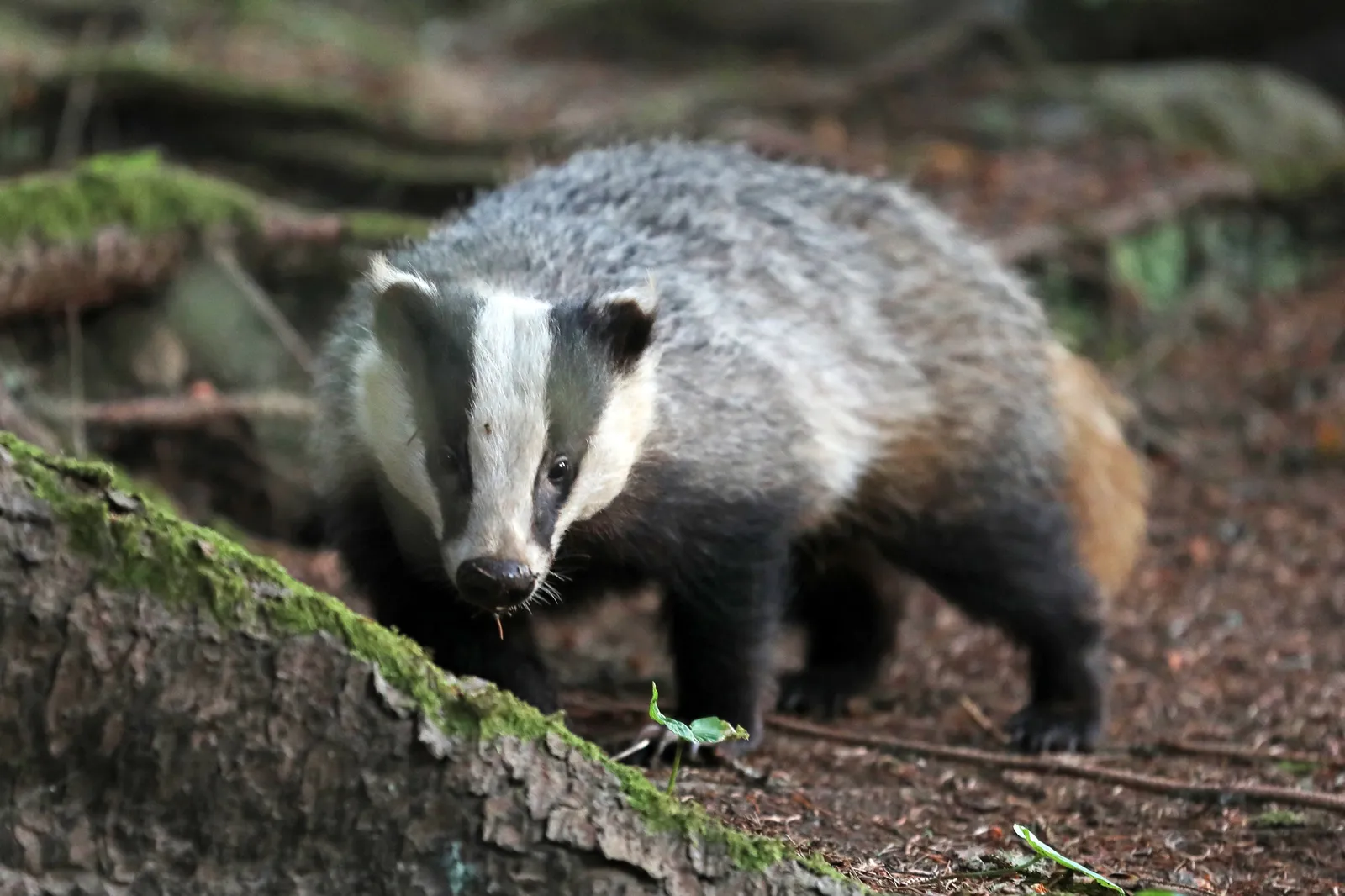
4. Take a Closer Look – What Can I Do?
Every animal has a body adapted to help it survive in its environment. To live in the forest, you must know how to climb, hunt, jump, swim, move quietly, or hear exceptionally well.
Come and see what a nuthatch can do – a small but extraordinary bird.
The Eurasian nuthatch is the only bird in our region that can climb down a tree trunk headfirst. How does it manage that?
- It has strong claws and short, powerful legs that help it grip the bark tightly.
- Its beak is sharp and straight – like a tiny chisel it uses to extract insects from crevices in the bark.
- Unlike woodpeckers, it doesn’t use its tail for support while climbing – its legs do all the work.
The nuthatch is small, but brave. It’s not afraid of larger birds. It nests in tree cavities, often using old nest boxes, and stores food for the winter.
How have other animals adapted to forest life?
Frog – Two Habitats
As an amphibian, it lives both in water and on land.
- It has moist skin that allows it to breathe and absorb water.
- Its back legs are long and strong – perfect for jumping and swimming.
Owl – Nighttime Master
- Its huge eyes allow it to see in the dark.
- Soft feathers and a special wing shape let it fly silently.
- Asymmetrical ears help it pinpoint the exact location of prey by sound.
Bat – Flying “Radar”
- The only flying mammal.
- It uses echolocation – it sends out sounds that bounce off objects, and by listening to the echo, it knows what’s around.
- Its wings are actually stretched skin between elongated fingers.
Bear – Super Sense of Smell
- It has an excellent sense of smell – it can detect food from several kilometers away.
- Its claws are long and strong, perfect for digging, opening logs, and flipping rocks.
- Though it may seem clumsy, it can run, climb, and swim very well.
Observe, compare, notice:
Beaks:
- Nuthatch: sharp for catching insects
- Owl: hooked for tearing prey
- Frog: no beak, but a sticky tongue
Claws/Legs:
- Nuthatch: for climbing
- Bear: for digging
- Frog: for jumping
- Bat: also uses them to hang upside down
Eyes and Ears:
- Owl: exceptional vision and hearing
- Bat: "hears" with its ears through echolocation
- Frog: senses vibrations
The forest is full of specialists.
Which animal would you like to be? And what would you like to be able to do?
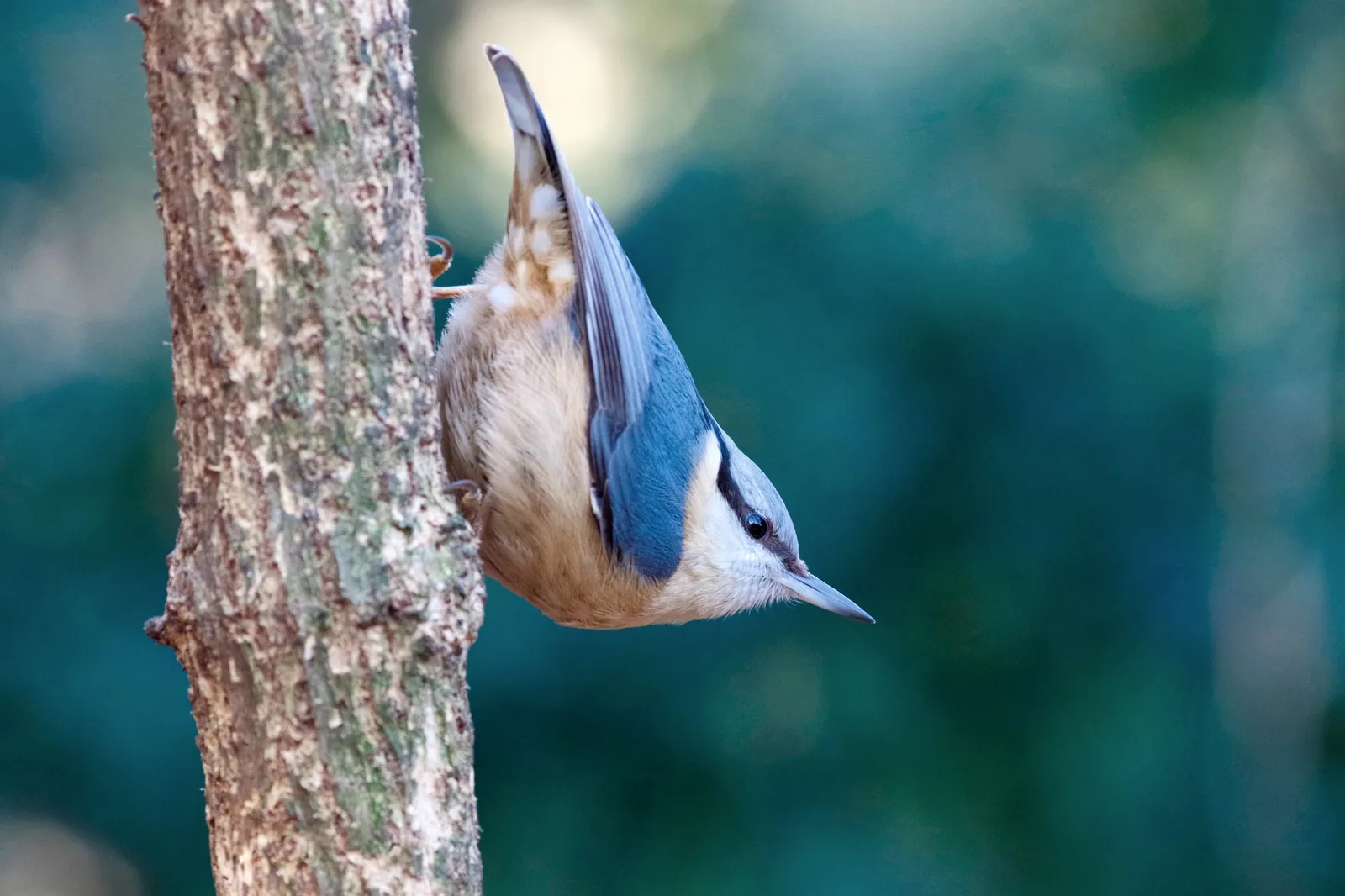
5. Life in the Forest – Who Lives Where?
Every animal needs a place to live – whether for resting, protection from predators, or raising young. These shelters are often well hidden and perfectly suited to the needs of each species.
The red fox usually digs its burrow in forests, meadows, or at the edge of fields – always in a location with a good view, but also with peace and escape routes.
Sometimes it digs the burrow itself, other times it uses an abandoned burrow of a badger or rabbit.
Inside, it creates several tunnels and chambers – for sleeping, raising young, and as escape routes.
Foxes are threatened by humans (cars, hunting) and the loss of quiet places – which is why they’re increasingly seeking shelter near human settlements.
Who lives where?
Squirrel – lives in tree cavities or builds a round nest from twigs high in the treetops.
Deer – doesn’t have a permanent shelter, but needs a large forest with hiding places, shade, and water.
Eagle owl – nests on rocky cliffs and ledges with a great view of its surroundings.
Frog – needs wetlands, lakes, and quiet water bodies where it lays eggs and keeps its skin moist.
Bat – hangs upside down in caves, old mines, or under roofs.
Bumblebee – nests underground, often in old mouse holes or root cavities.
Beaver – builds dams and lodges from branches and mud along slow rivers and streams.
Ants – live in anthills made of needles and twigs, which they build in sunny spots in the forest.
How can we help nature?
Some animals now struggle to find suitable places to live because forests and landscapes are changing. But we can help them:
- Birdhouses replace natural tree cavities – providing homes for tits, nuthatches, flycatchers, and even owls.
- Bat shelters – special “bat boxes” provide safe places for sleeping and overwintering.
- Insect hotels – create refuge for bumblebees, solitary wasps, ladybugs, and spiders.
- Preserving wetlands and old trees – helps hundreds of species that otherwise have nowhere to live.
Every forest holds hundreds of homes – some underground, others high in the treetops.
Can you guess who lives closest to you?
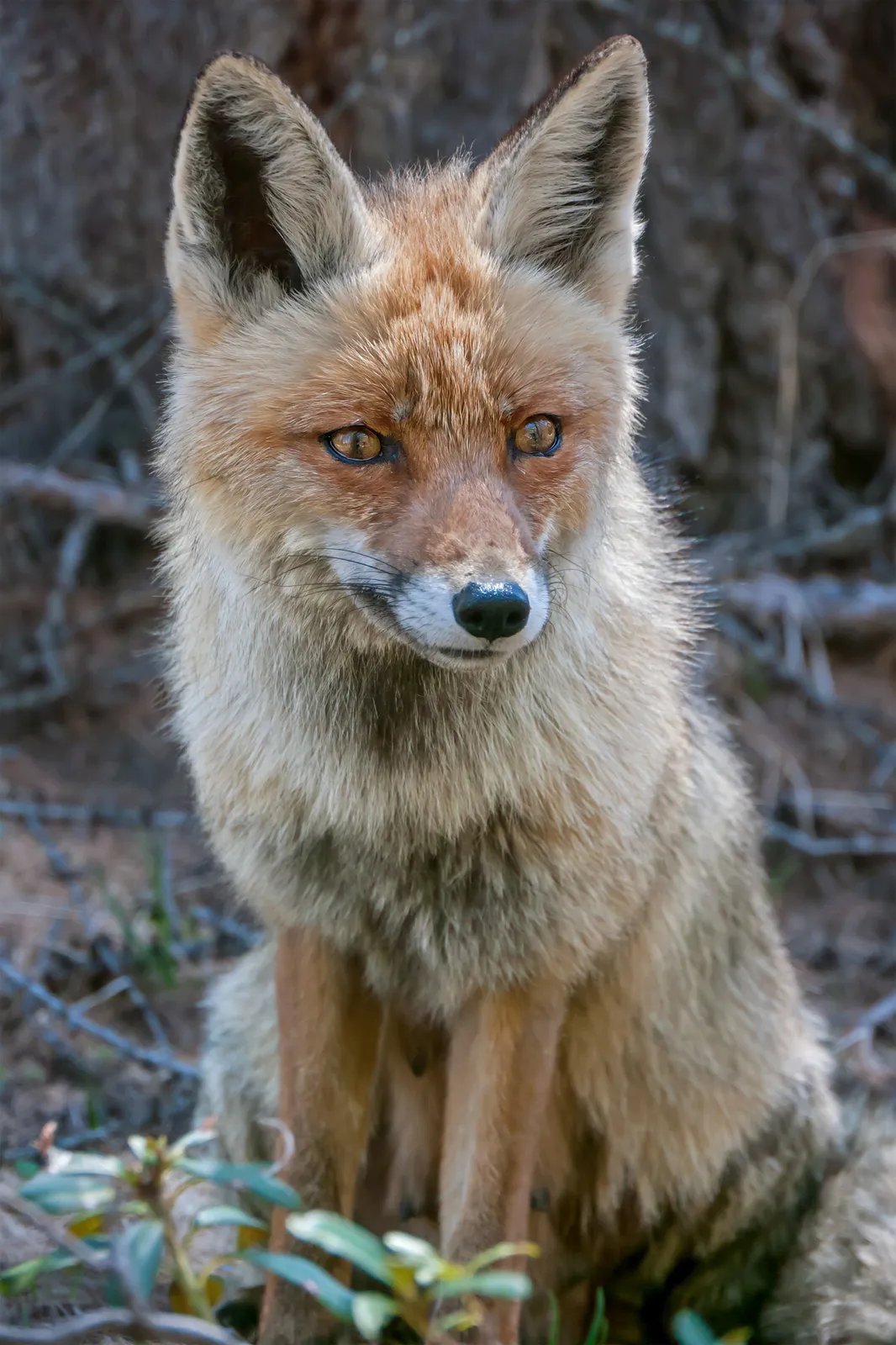
6. A Ruin Full of Life
At the top of Hradová (887 m above sea level) lie the remains of a medieval castle known as Tisovec Castle. Archaeological finds confirm that this area was inhabited as early as the Neolithic and Bronze Ages. In the Middle Ages, two fortresses stood here – the Old Castle and the New Castle. The New Castle, built on the Round Rock (Okrúhla skala), was known for being nearly impregnable.
Today, these ruins are not only a historical landmark but also a refuge for many animals, forming a unique ecosystem.
A typical resident of the sunny stone walls and rocky cliffs is the wall lizard. Its scaly body and quick movements help it hunt insects efficiently and escape predators. The ruins provide ideal living conditions for this agile reptile.
Other inhabitants of the castle ruins:
Butterflies – use the diverse surrounding flora for laying eggs and as a food source.
Spiders – along with other insects, form the base of the food chain.
Grass snakes – seek sunny spots for basking and hunt small rodents.
Songbirds – nest nearby and feed on insects and fruits.
Birds of prey – use open areas for hunting and rocky ledges for nesting.
Protected Areas and Nature Conservation
Tisovský Castle is located in a strictly protected natural area:
Natura 2000 – Tisovský Karst (SKUEV0282):
This area is part of the European network of protected sites aimed at safeguarding endangered species and habitats.
Muránska Planina National Park – Zone A:
The castle lies in the zone with the highest level of protection (fifth degree), where nature is left to develop without human interference.
What is an Ecosystem?
An ecosystem is a community of living organisms and their non-living environment, interacting with one another.
At the castle ruins, history meets nature, and every stone can be home to a variety of species.
How Can We Help?
- Preserving ruins: Keeping castle remains intact and undisturbed allows many species to survive.
- Education and awareness: Informing the public about the importance of these locations supports their protection.
Supporting protected areas: Respecting rules in conservation zones helps preserve biodiversity.
